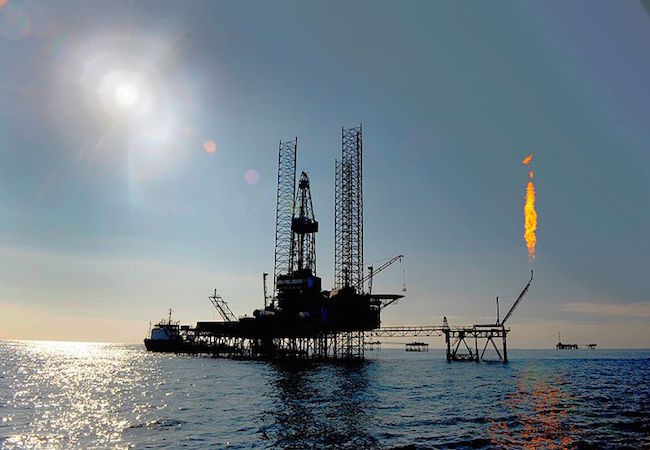
By Osama Rizvi
The oil markets have just received a long awaited yet unexpected jolt. “No one is yawning now”, as an article in New York Times puts it. The prices plunged 8pc in two days as the report from EIA department showed an inventory build-up of 8.2 million barrels rendering the total inventory at 528 million barrels, the highest in history. Before we move on there are few things to consider making sense of what is happening in the oil markets of-late. How did we get here?
It all started from the Vienna oil deal which is still holding on, reporting a compliance rate of almost 90%. As the deal started showing some results the global oil prices, more in anticipation and less than the change in fundamentals, started to rally up. And as this happened the US shale players that were facing financial issues started to come back on the fields with their derricks. The US production now started to climb and the markets were stalled resulting from an offsetting effect. The news and articles mostly swung between the opinions of where the oil prices may go to the prospects of Shale boom. But the recent development has changed it all.
Last week in Houston at CERA “efficiency was the buzzword”. But there was something else as well. An admonition and a warning that Saudi Arabia will not allow “free-riders” to take advantage of the production cuts. And also that the world should not think that we are going to extend the oil deal another 6 months. There is a very interesting thing to note here. Few months back when the prices were down and the air was thick with the hope of a deal being struck, it was Saudi Arabia that was leading by not only words but also by example. As the deal was penned down KSA cut more than that it promised. Not only this it took the initiative and appeased the growing concerns of the world regarding the agreement reached by OPEC and NOPEC countries. Bringing Russia to the table was a great feat, indeed.
But, as I have noted in my recent articles, the hidden ineffectiveness of the deal that was to come to the surface in case the prices didn’t show any improvement (which just happened), there was to be dissent coming from different members of the Vienna deal, not surprisingly it came from the country that made the deal eventuate: KSA. Mr. Khalid Al-Falih’s remarks appertaining to the extension of the agreement are symptomatic of the first spark of ‘doubt’ of questioning the effectiveness and the purpose of the deal itself. If they continue the production cuts then, evidently, the prices are going to rise. Consequently and obviously this will be followed by an increase in production by the Shale producers. And we after making merry-go-rounds come to the same point. Mr. Harold Hamm has said that we should not try to “kill” the oil signaling towards the growth in shale. But who is going to stop when the prices go up?
Yes, there is a fostering fear that, given the cuts in the E&P projects past years, there can be a supply-demand gap in the future- demand being more than the supply. The Paris based agency, IEA, recently reported this concern: “Global oil supply to lag demand after 2020 unless new investments are approved soon”. But the good news is that there certainly are new investments being approved: Total’s CEO says that in the next year and a half they are going to approve 10 big projects. Shell is also working on Kaikas deepwater oil in Gulf of Mexico. Also, the production cost for US wells has declined 46% according to some estimates from 2014 to 2016, according to Rystad Energy.
Other headwinds include a rising US dollar. It is widely understood that over the preceding decade that there has been an inverse correlation between the dollar and various commodities. A strong dollar causes commodities traded in greenbacks expensive for non-US trading economies. Hence, a reduction in demand, in this case for oil whose pricing level remains tenuous, would result in a plummeting global price. US Fed chief Janet Yellen has signaled a forthcoming increase in interest rates when the Fed’s FOMC meets in March 2017 for its policy setting meeting. The recent job data report for the month of February showed an addition of 235,000 jobs. The case for an interest rate hike, when the FOMC meets after few days, is very strong now. Moreover, given Trump’s future policy plans: increasing government spending and reducing corporate taxes, that are supposed to stoke inflation, markets are expecting more interest rate hikes this year as compared to the last one
The transport sector that accounts for every one out of four barrels produced is likely to undergo immense changes as well. Toyota Motors plans to stop producing petrol and diesel engines by 2050. Mr. Fatih Birol of IEA also says that “Electric cars are happening” and MIT’s TechnologyReview reported that the EV’s can affect the global gasoline consumption.
So as we are into the third month of the Vienna Oil deal, speculation is rampant but market observers are keenly following market fundamentals, US government monetary policy, OPEC production and global commodity demand. The oil prices hinges on a deal which was supposed to take the excess supply out of the markets but it is getting a tough time from the US shale producers. Albeit in the shorter term we can see oil prices being more or less favorable but there has been no change in the fundamentals. The inventory levels crossed 520 million. Goldman Sachs very rightly puts the title of one of their oil reports; it is truly the “New Oil Order” in the making.
Osama Rizvi is an independent economic analyst, writer and editor.




